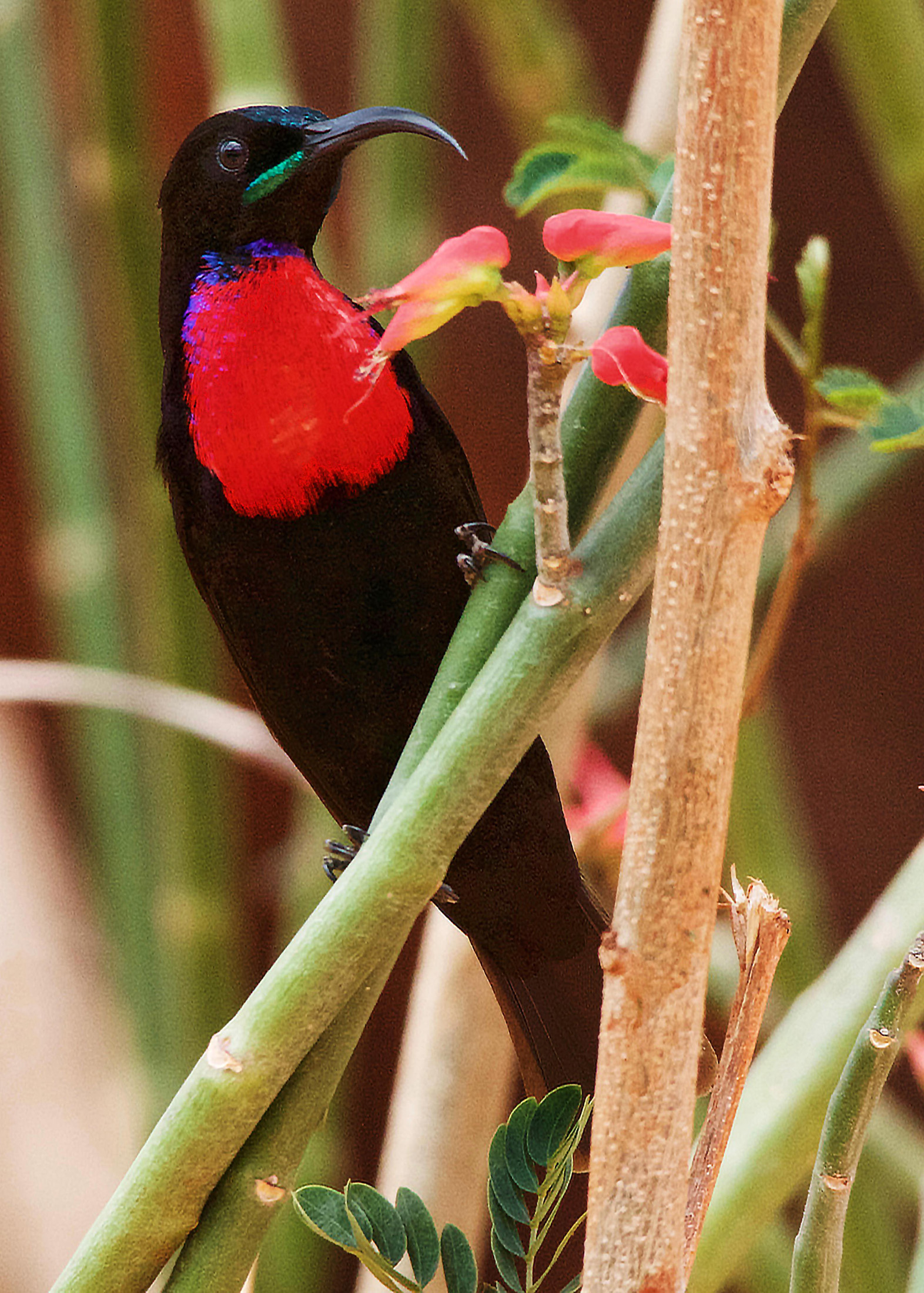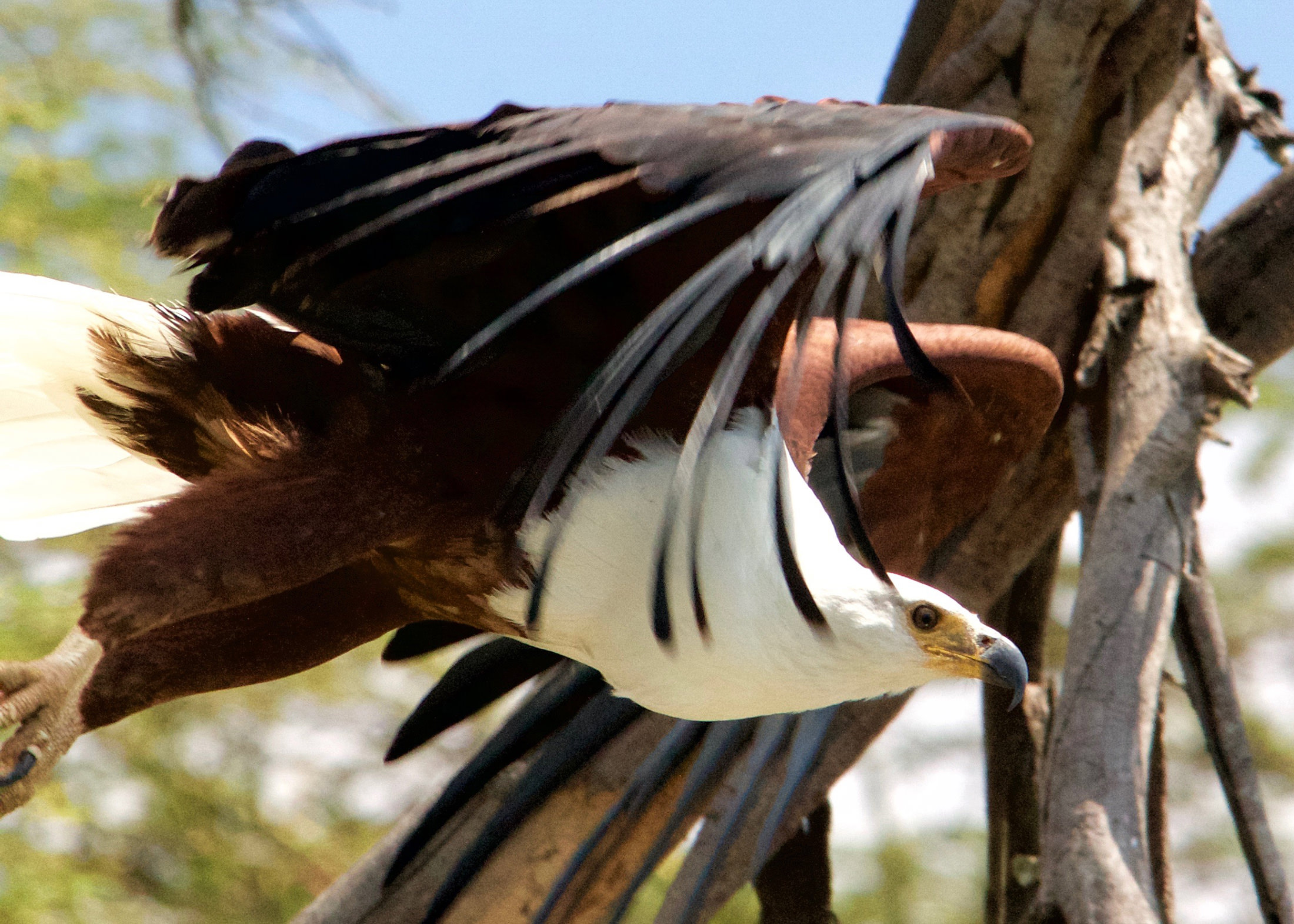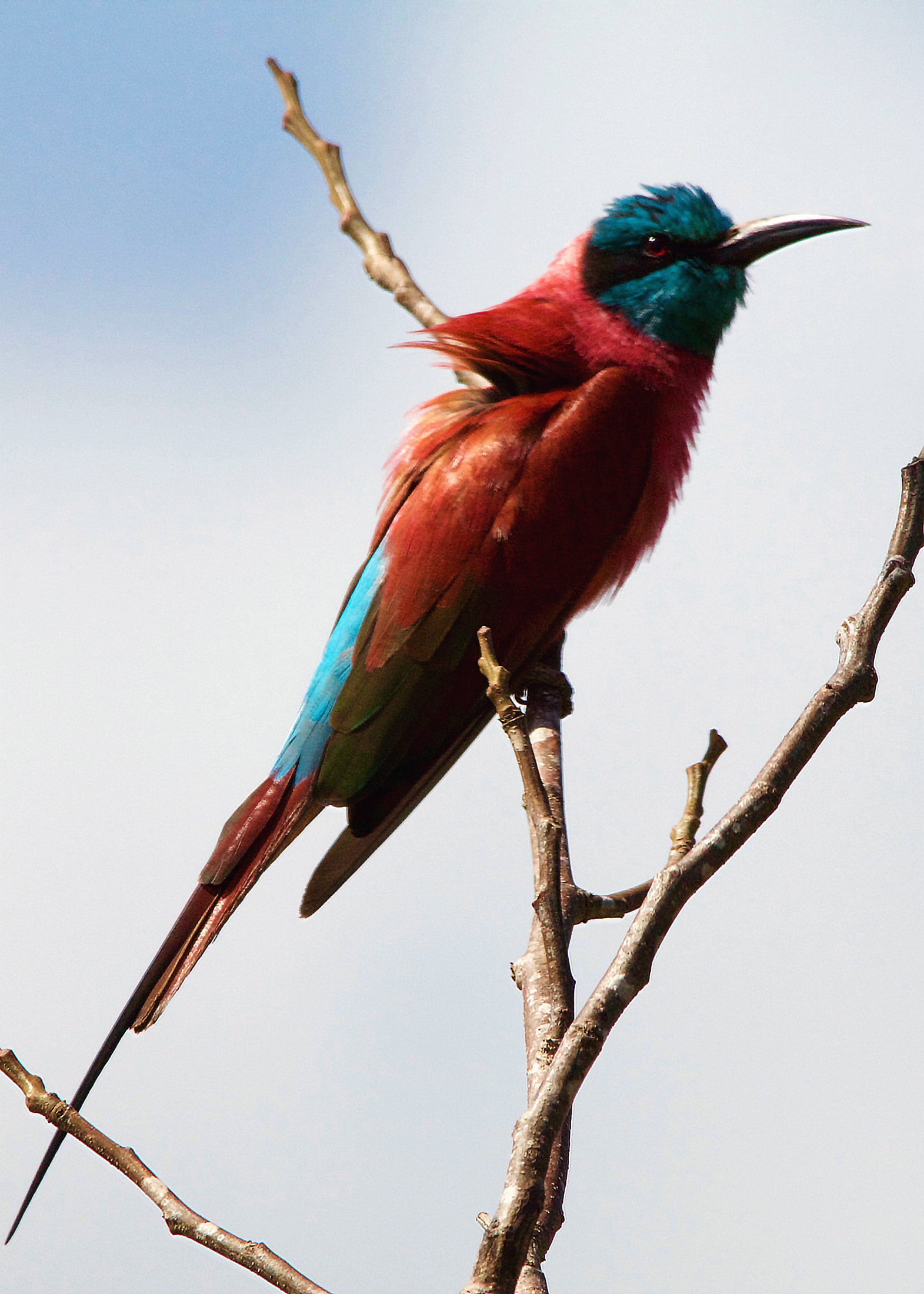-

Hunter’s sunbird.
-

African hornbill.
Photo via Flickr, Michael Jansen. -

African fish eagle .
-

Northern carmine bee eater.
-

Golden-breasted starlings.
Year of the Bird
The 27th International Ornithological Congress.
Every bird species has its enthusiasts, many of whom will be converging on Vancouver from August 19 to 26 for the 27th International Ornithological Congress. The gathering has occurred every four years since first being held in Vienna in 1884, and it is one of the oldest and most prestigious meetings for bird scientists.
In 2018, designated Year of the Bird—deemed as such by National Geographic—many will be looking at evolutionary survivors like, for instance, the hornbills of the African savannah. When breeding season arrives, hornbills seek tree cavities, where the female lays her eggs. The male “muds” her in completely, leaving just a tiny hole through which he feeds her while she incubates the eggs, and then the chicks, until all eventually peck their way out. This ensures the female and her brood stay safe from snakes and possible predation by other hornbills.
The birding world has always attracted its share of quirky characters, who over the centuries have “discovered” species and given them their names.
Other members of the world’s 10,000 or so bird species have not been so lucky in their fight to survive habitat destruction and other challenges since the end of the Miocene epoch (lasting between 23 and 5.3 million years ago) when, as author Jonathan Franzen points out, “Birds ruled the planet.” He is one of their famous champions, in addition to the millions of birders in North America, the more active of whom are out there doing Christmas Bird Counts, feeding birds in their backyards, travelling the world to see a special species, and debating the presence of one of the main predators of songbirds in urban areas—cats.
The birding world has always attracted its share of quirky characters, who over the centuries have “discovered” species and given them their names. In his recent book Birdmania, Bernd Brunner introduces us to renowned owl expert Heimo J. Mikkola of Finland, whose passion has taken him to 128 countries to scope out about 120 owl species. While on Mahé island in the Indian Ocean looking for the Seychelles scops owl, he wandered too close to the president’s palace and was arrested on suspicion of being an assassin. When he was able to convince the police that the guttural noises they were hearing at night were not coming from frogs, but one of the rarest owls in the world, Mikkola was released to continue his work—with the president’s blessing.
For ordinary bird lovers, though, Brian Self, an expert birder and sometime guide at the George C. Reifel Migratory Bird Sanctuary in the Fraser River estuary in Delta, B.C., sounds a note of caution: technology can be harmful to birds. Self does not “call” birds with an app, as many birders do, since “If a dozen or more birders do this in a day in the breeding season—when the species is foraging for food to feed a mate sitting on eggs—then we are putting more stress on the bird in question, since it abandons its foraging to show up and defend its territory against this new intruder on its home range,” he explains. “Stress levels increase, mate and family suffer.”
At the end of the day, speaking for bird lovers, Self may well put it best. “Watching birds keeps me balanced and contented.”
Photos by Rob Seed.
_________
Never miss a story. Sign up for NUVO’s weekly newsletter, here.





